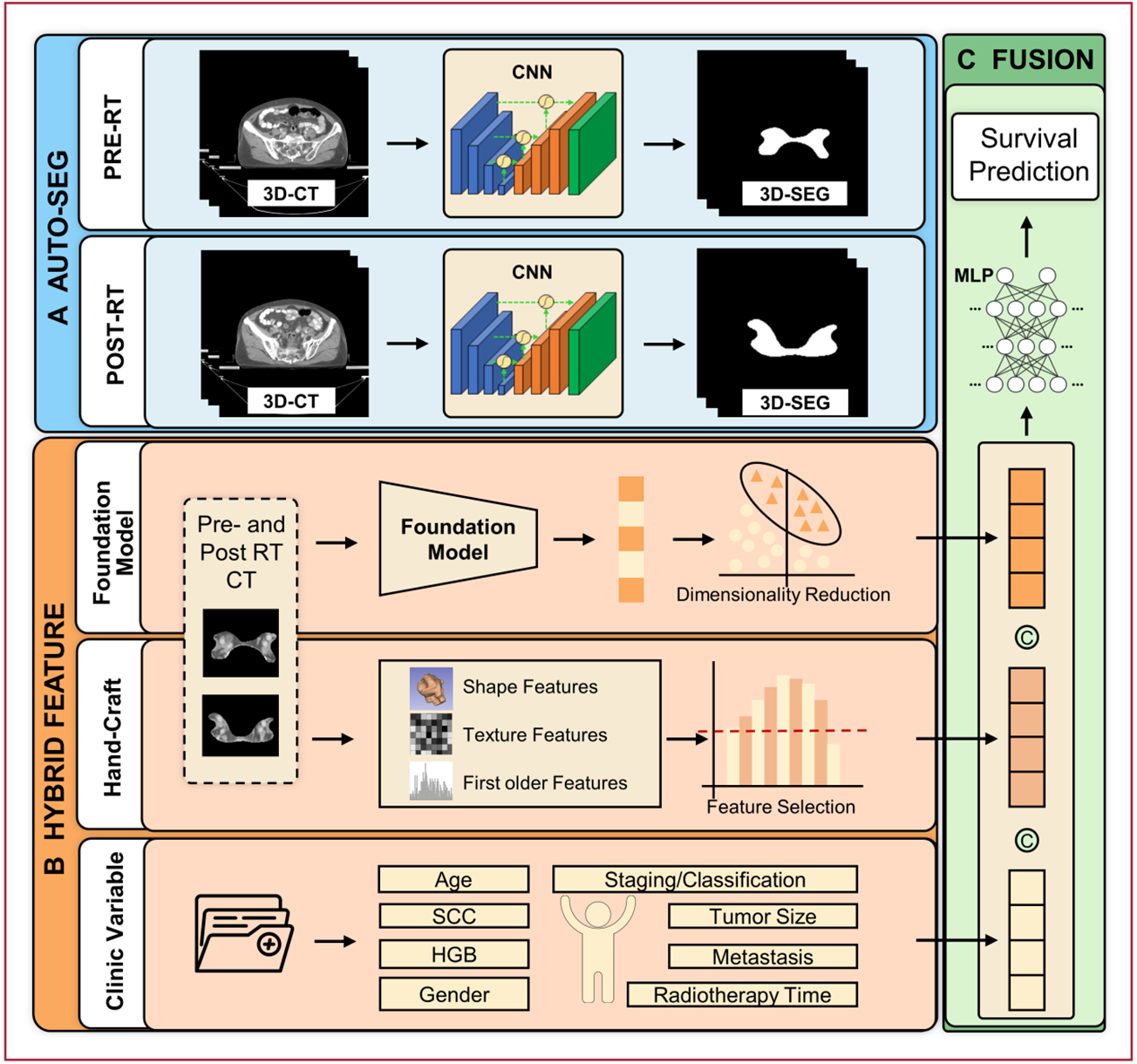
Researchers Develop Multimodal Deep Learning Model to Enhance Precision Radiotherapy Decision-Making
Cervical cancer is a major public health concern that poses a significant threat to women's health worldwide. While standard concurrent chemoradiotherapy (CCRT) achieves disease-free survival (DFS) in approximately 70% of patients with locally advanced disease, nearly 30% still experience recurrence or metastasis.
Intensified treatment strategies may improve survival rates, but they often come with heightened toxicity and greater financial costs. The key challenge is accurately identifying patients who truly need intensive treatment, as standard therapy suffices for low-risk cases, whereas high-risk patients benefit from aggressive intervention—yet clinicians lack reliable survival prediction models to guide these decisions.
Recently, a team led by Assoc. Prof. LIANG Xiaokun from the Shenzhen Institutes of Advanced Technology (SIAT) of the Chinese Academy of Sciences, in collaboration with Prof. HU Ke and Prof. HOU Xiaorong from the Peking Union Medical College Hospital, has developed a deep learning-based multimodal prognostic prediction model —CerviPro. This model provides a comprehensive approach to risk stratification, enabling personalized treatment strategies.
The study was published in npj Digital Medicine on Aug. 04.
CerviPro, integrates pre- and post-radiotherapy CT foundation model features, radiomics features, and clinical information. First this model employs deep learning-based automatic segmentation techniques to precisely extract tumor regions. Subsequently, utilizing a pre-trained CT foundation model extract high-dimensional deep features. Intelligent fusion of multi-source heterogeneous data is then achieved through principal component analysis (PCA) for dimensionality reduction and feature selection techniques.
To ensure the clinical applicability of the model, researchers collected multimodal clinical data from 1,018 cervical cancer patients across multiple hospitals in China. Using a multi-center validation design, they demonstrated that the model not only achieves high performance in individual hospital settings but also maintains robustness and adaptability across diverse real-world clinical environments.
Experimental results demonstrated that CerviPro achieved robust predictive performance across all testing cohorts (training, internal validation, and external validation), successfully stratifying patients into distinct high-risk and low-risk DFS groups.
"Our model can accurately inform clinicians whether a patient belongs to a high-risk group—potentially requiring intensified treatment—or a low-risk group, where de-escalated treatment options may be considered, along with other critical prognostic insights," said Assoc. Prof. LIANG.
Moreover, CerviPro demonstrated significantly superior predictive performance compared to both conventional Cox proportional hazards models and DeepSurv.
This study offers clinicians a reliable, intelligent decision-support tool for accurately identifying high-risk patients and guiding the development of personalized treatment strategies.

Workflow of the CerviPro model for multimodal feature integration and survival prediction. (Image by SIAT)
File Download:
